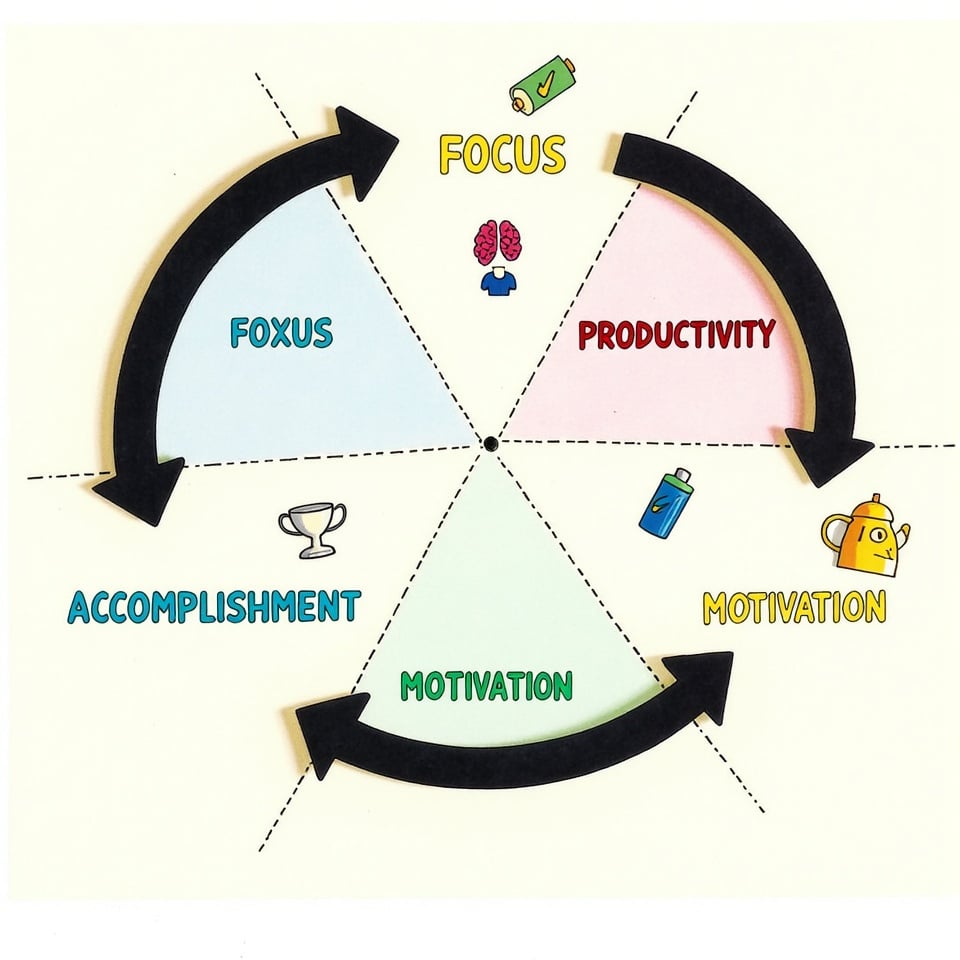Want to drive real business value?
Effective project portfolio management (PPM) is the key.
By prioritizing and optimizing projects, you can achieve your strategic goals.
But what does it take to implement PPM successfully?
What is Project Portfolio Management (PPM)?
Imagine you’re a master chef, running a busy kitchen with multiple dishes cooking simultaneously.
You need to ensure each dish is prepared on time, within budget, and meets the diner’s expectations.
That’s similar to what Project Portfolio Management (PPM) does, but instead of dishes, it’s projects.
PPM is the process of managing a collection of projects, programs, and other related work to achieve strategic objectives and maximize business value.
In today’s fast-paced business environment, PPM is crucial for organizations to stay competitive.
It helps you prioritize projects, allocate resources efficiently, and make informed decisions about which projects to pursue.
By doing so, you can optimize your project portfolio, reduce costs, and increase revenue.
Key Components of a Project Portfolio
A project portfolio typically consists of:
- Projects: Individual initiatives with specific goals, timelines, and budgets.
- Programs: A group of related projects managed together to achieve a broader objective.
- Other related work: Ongoing operations, maintenance tasks, and other activities that support the projects and programs.
Think of a project portfolio like an investment portfolio.
Just as you diversify your investments to minimize risk, a project portfolio helps you balance risk and reward across various projects and programs.
PPM vs. Project Management vs. Program Management
Now, let’s clarify the differences between PPM, project management, and program management:
- Project Management: Focuses on delivering a single project on time, within budget, and to the required quality standards.
- Program Management: Oversees a group of related projects to achieve a broader business objective.
- Project Portfolio Management (PPM): Manages a collection of projects, programs, and other related work to achieve strategic objectives and maximize business value.
To illustrate the difference, consider a construction company:
- Project management: Building a single house.
- Program management: Developing a housing complex with multiple buildings.
- PPM: Overseeing a portfolio of housing complexes, commercial buildings, and infrastructure projects to achieve the company’s strategic objectives.
The Benefits of Effective Project Portfolio Management
Now that we’ve explored what Project Portfolio Management (PPM) is, let’s dive into the benefits it can bring to your organization.
Effective PPM is like having a compass that guides your project management efforts, ensuring you’re always moving in the right direction.
By implementing PPM, you can unlock numerous benefits that drive business success.
1. Strategic Alignment and Goal Achievement
Effective PPM helps you align your projects and programs with your organization’s strategic objectives.
This ensures that every project, no matter how small or large, contributes to the overall business goals.
By prioritizing projects based on their strategic value, you can:
- Focus on high-impact initiatives that drive business growth
- Eliminate non-essential projects that waste resources
- Ensure that every project supports the organization’s mission and vision
Think of strategic alignment like a puzzle.
Each project is a piece that fits into the larger picture, and PPM helps you ensure that every piece is in its right place.
By achieving strategic alignment, you can make progress toward your business goals and realize tangible benefits.
2. Improved Resource Allocation and Reduced Inefficiency
With PPM, you can optimize resource allocation across projects and programs.
This means you can:
- Assign the right people to the right projects
- Ensure that each project has the necessary resources to succeed
- Reduce resource waste by eliminating duplicate or unnecessary efforts
Effective resource allocation is like cooking a perfect recipe.
You need the right ingredients, in the right quantities, at the right time.
PPM helps you get the recipe right, ensuring that your projects are delivered efficiently and effectively.
3. Enhanced Risk Management and Mitigation
PPM helps you identify, assess, and mitigate risks across your project portfolio.
By doing so, you can:
- Proactively address potential risks and issues
- Develop contingency plans to minimize their impact
- Ensure that your projects are resilient and adaptable in the face of uncertainty
Risk management is like navigating a stormy sea.
You need to anticipate the waves, adjust your course, and keep your ship on track.
PPM provides the tools and insights you need to navigate risks and stay on course.
4. Increased Agility and Adaptability
With PPM, you can respond quickly to changing business needs and market conditions.
This means you can:
- Rapidly adjust your project portfolio to address new opportunities or challenges
- Ensure that your projects are aligned with shifting business priorities
- Foster a culture of innovation and continuous improvement
Agility is like being a surfer on a wave.
You need to be able to adapt quickly to changing conditions and ride the wave to success.
PPM helps you stay agile and responsive, ensuring that your projects and programs remain relevant and effective.
5. Better Decision Making and Visibility
Effective PPM provides real-time visibility into your project portfolio, enabling you to make informed decisions about which projects to pursue, prioritize, or cancel.
With PPM, you can:
- Get a clear picture of project performance and progress
- Make data-driven decisions about project investments
- Ensure that your projects are aligned with business objectives and stakeholder expectations
Better decision-making is like having a clear map to guide your journey.
PPM provides the visibility and insights you need to navigate your project portfolio and make decisions that drive business success.
The Project Portfolio Management Process
Effective Project Portfolio Management (PPM) requires a structured approach to ensure that your projects and programs align with your business objectives and drive strategic value.
The PPM process is a series of interconnected steps that help you manage your project portfolio efficiently and effectively.
By following this process, you can optimize your project portfolio, reduce costs, and increase revenue.
Step 1: Identify Business Objectives and Goals
The first step in the PPM process is to identify your business objectives and goals.
This involves:
- Defining your organization’s mission, vision, and values
- Establishing clear business objectives and key performance indicators (KPIs)
- Identifying the strategic initiatives that will drive business growth and success
Think of this step as setting the destination for your journey.
You need to know where you’re going before you can plan how to get there.
By identifying your business objectives and goals, you can create a clear roadmap for your project portfolio.
Step 2: Capture and Evaluate Project Requests and Ideas
Once you have a clear understanding of your business objectives and goals, you can start capturing and evaluating project requests and ideas.
This involves:
- Establishing a process for submitting project requests and ideas
- Evaluating each request against your business objectives and goals
- Assessing the feasibility, risks, and potential benefits of each project
This step is like collecting puzzle pieces.
You need to gather all the pieces before you can start assembling the puzzle.
By capturing and evaluating project requests and ideas, you can create a comprehensive picture of your project portfolio.
Step 3: Select and Prioritize Projects
With a list of potential projects in hand, you can start selecting and prioritizing them.
This involves:
- Applying a set of criteria to evaluate each project’s strategic value and feasibility
- Prioritizing projects based on their alignment with business objectives and goals
- Ensuring that the selected projects are balanced and aligned with the organization’s overall strategy
Think of this step as choosing the right ingredients for a recipe.
You need to select the ingredients that will work well together and produce the desired outcome.
By selecting and prioritizing projects, you can create a balanced and effective project portfolio.
Step 4: Validate Portfolio Feasibility and Initiate Projects
Once you have selected and prioritized your projects, you need to validate the portfolio’s feasibility and initiate the projects.
This involves:
- Assessing the portfolio’s overall feasibility and potential risks
- Ensuring that the necessary resources and budget are available
- Initiating the projects and assigning project managers and teams
This step is like checking the weather forecast before embarking on a journey.
You need to ensure that the conditions are right before you start.
By validating the portfolio’s feasibility and initiating projects, you can set your project portfolio up for success.
Step 5: Monitor and Control the Portfolio
The final step in the PPM process is to monitor and control the portfolio.
This involves:
- Tracking project progress and performance
- Identifying and addressing potential risks and issues
- Ensuring that the portfolio remains aligned with business objectives and goals
Think of this step as navigating a ship through treacherous waters.
You need to stay vigilant and make adjustments as needed to stay on course.
By monitoring and controlling the portfolio, you can ensure that your project portfolio delivers the expected benefits and drives business success.
Overcoming Common Challenges in Project Portfolio Management
Effective Project Portfolio Management (PPM) is not without its challenges.
As a project portfolio manager, you’ll encounter a range of obstacles that can hinder your ability to deliver strategic value and drive business success.
However, by understanding these challenges and developing strategies to overcome them, you can optimize your project portfolio and achieve your business objectives.
1. Limited Resources and Budget Constraints
One of the most common challenges in PPM is limited resources and budget constraints.
This can lead to:
- Insufficient funding for projects
- Inadequate resource allocation
- Difficulty in prioritizing projects
To overcome this challenge, you need to develop a robust resource allocation plan that aligns with your business objectives.
This involves:
- Identifying and prioritizing critical projects
- Allocating resources effectively
- Developing a contingency plan to address potential resource shortages
By doing so, you can ensure that your projects are adequately resourced and funded, even in the face of limited resources and budget constraints.
2. Insufficient Data and Visibility
Another common challenge in PPM is insufficient data and visibility.
This can lead to:
- Poor project performance
- Inadequate decision-making
- Difficulty in identifying and addressing potential risks
To overcome this challenge, you need to develop a robust data management plan that provides real-time visibility into your project portfolio.
This involves:
- Establishing a centralized data repository
- Developing a reporting and analytics framework
- Providing stakeholders with timely and accurate information
By doing so, you can ensure that you have the data and visibility you need to make informed decisions and drive business success.
3. Inadequate Stakeholder Engagement and Communication
Inadequate stakeholder engagement and communication are another common challenge in PPM.
This can lead to:
- Poor project adoption
- Inadequate support for projects
- Difficulty in managing stakeholder expectations
To overcome this challenge, you need to develop a robust stakeholder engagement and communication plan.
This involves:
- Identifying and analyzing stakeholder needs and expectations
- Developing a communication plan that addresses stakeholder needs
- Providing regular updates and progress reports to stakeholders
By doing so, you can ensure that your stakeholders are engaged and informed, and that your projects receive the support and adoption they need to succeed.
4. Prioritize and Categorize Projects Effectively
Prioritizing and categorizing projects effectively is critical to successful PPM.
However, this can be a challenge, especially when faced with multiple competing projects.
To overcome this challenge, you need to develop a robust prioritization and categorization framework that aligns with your business objectives.
This involves:
- Establishing clear criteria for prioritizing and categorizing projects
- Developing a scoring system to evaluate project proposals
- Ensuring that projects are aligned with business objectives and goals
By doing so, you can ensure that your projects are prioritized and categorized effectively and that your project portfolio is optimized for business success.
5. Continuously Monitor and Review the Portfolio
Finally, continuously monitoring and reviewing the portfolio is critical to successful PPM.
This involves:
- Regularly reviewing project performance and progress
- Identifying and addressing potential risks and issues
- Ensuring that the portfolio remains aligned with business objectives and goals
By doing so, you can ensure that your project portfolio remains optimized and that your projects are delivering the expected benefits.
By continuously monitoring and reviewing the portfolio, you can drive business success and achieve your strategic objectives.
Choosing the Right Project Portfolio Management Tool
One of the key enablers of successful PPM is the right tool.
With so many PPM tools and software available in the market, choosing the right one can be a daunting task.
In this section, we’ll explore the key features and functionality to consider, the benefits of using a PPM tool, and the top PPM tools and software in 2025.
Key Features and Functionality to Consider
When selecting a PPM tool, there are several key features and functionalities to consider.
These include:
- Project management capabilities: The ability to plan, track, and manage projects from initiation to closure.
- Portfolio management capabilities: The ability to manage multiple projects and programs, and to prioritize and optimize the portfolio.
- Resource allocation and management: The ability to allocate and manage resources across projects and programs.
- Reporting and analytics: The ability to generate reports and analytics to support decision-making.
- Integration with other tools and systems: The ability to integrate with other tools and systems, such as project management software, ERP systems, and CRM systems.
Benefits of Using a PPM Tool
Using a PPM tool can bring numerous benefits to your organization. Some of the key benefits include:
- Improved project management: A PPM tool can help you to plan, track, and manage projects more effectively.
- Enhanced portfolio management: A PPM tool can help you to prioritize and optimize your project portfolio, and to ensure that it is aligned with your business objectives.
- Better resource allocation: A PPM tool can help you to allocate and manage resources more effectively, and to reduce waste and inefficiency.
- Improved reporting and analytics: A PPM tool can provide you with real-time reporting and analytics, enabling you to make informed decisions and drive business success.
- Increased collaboration and communication: A PPM tool can help to improve collaboration and communication across teams and stakeholders, and to ensure that everyone is aligned and working towards the same goals.
By using a PPM tool, you can drive business success and achieve your strategic objectives.
Top PPM Tools and Software in 2025
There are many PPM tools and software available in the market, each with its strengths and weaknesses. Some of the top PPM tools and software in 2025 include:
- Asana: A cloud-based PPM tool that provides project management, portfolio management, and resource allocation capabilities. (Here’re guides comparing Asana vs. Trello & Asana vs Jira)
- Microsoft Project: A comprehensive PPM tool that provides project management, portfolio management, and resource allocation capabilities.
- Planview: A PPM tool that provides project management, portfolio management, and resource allocation capabilities, as well as reporting and analytics.
- CA PPM: A comprehensive PPM tool that provides project management, portfolio management, and resource allocation capabilities, as well as reporting and analytics.
- Smartsheet: A cloud-based PPM tool that provides project management, portfolio management, and resource allocation capabilities, as well as reporting and analytics.
By considering these top PPM tools and software, you can find the right tool to support your PPM processes and drive business success.
Wrapping it Up
Effective Project Portfolio Management (PPM) is crucial for driving strategic value and business success.
By implementing a structured PPM process, overcoming common challenges, and choosing the right PPM tool, organizations can optimize their project portfolios and achieve their business objectives.
Key Takeaways:
- Effective PPM drives strategic value and business success
- A structured PPM process optimizes project portfolios
- The right PPM tool streamlines processes and improves project management
Get Started with PPM Today
Implement effective PPM practices and choose the right PPM tool to support your business objectives.
With the right approach and tools, you can achieve your strategic objectives and stay ahead of the competition.
FAQs about Project Portfolio Management (PPM)
What is the primary goal of project portfolio management?
The primary goal of project portfolio management (PPM) is to optimize the selection, prioritization, and execution of projects to achieve strategic business objectives. PPM aims to ensure that the organization’s project portfolio is aligned with its overall business strategy, and that the projects undertaken are those that will deliver the greatest value to the organization. By achieving this goal, organizations can maximize their return on investment (ROI), reduce costs, and improve overall business performance.
How does PPM differ from project management and program management?
PPM differs from project management and program management in its scope and focus. Project management is concerned with the planning, execution, and delivery of individual projects, while program management is concerned with the management of multiple related projects. PPM, on the other hand, is concerned with the management of all projects and programs within an organization, with a focus on strategic alignment, resource allocation, and portfolio optimization.
Key differences include:
- Scope: PPM has a broader scope than project and program management
- Focus: PPM focuses on strategic alignment and portfolio optimization, while project and program management focus on individual project delivery
- Goals: PPM aims to achieve strategic business objectives, while project and program management aim to deliver individual projects and programs
What are the most common challenges in implementing PPM?
The most common challenges in implementing PPM include:
- Limited resources and budget constraints
- Insufficient data and visibility into project performance
- Inadequate stakeholder engagement and communication
- Difficulty in prioritizing and categorizing projects
- Limited expertise and skills in PPM
- Resistance to change and cultural barriers
These challenges can be overcome by implementing a structured PPM process, using a PPM tool, and providing training and support to stakeholders.
What are the benefits of using a PPM tool?
The benefits of using a PPM tool include:
- Improved project management and delivery
- Enhanced portfolio management and optimization
- Better resource allocation and utilization
- Improved reporting and analytics
- Increased collaboration and communication among stakeholders
- Reduced costs and improved ROI
By using a PPM tool, organizations can streamline their PPM processes, improve project delivery, and achieve their strategic business objectives.
What industries benefit most from PPM?
PPM can benefit any industry that undertakes multiple projects and programs, including:
- IT and software development
- Construction and engineering
- Financial services and banking
- Healthcare and pharmaceuticals
- Government and public sector
- Manufacturing and production
These industries often have complex project portfolios, limited resources, and high stakes, making PPM a critical component of their business strategy.
By implementing PPM, organizations in these industries can improve project delivery, reduce costs, and achieve their strategic business objectives.







